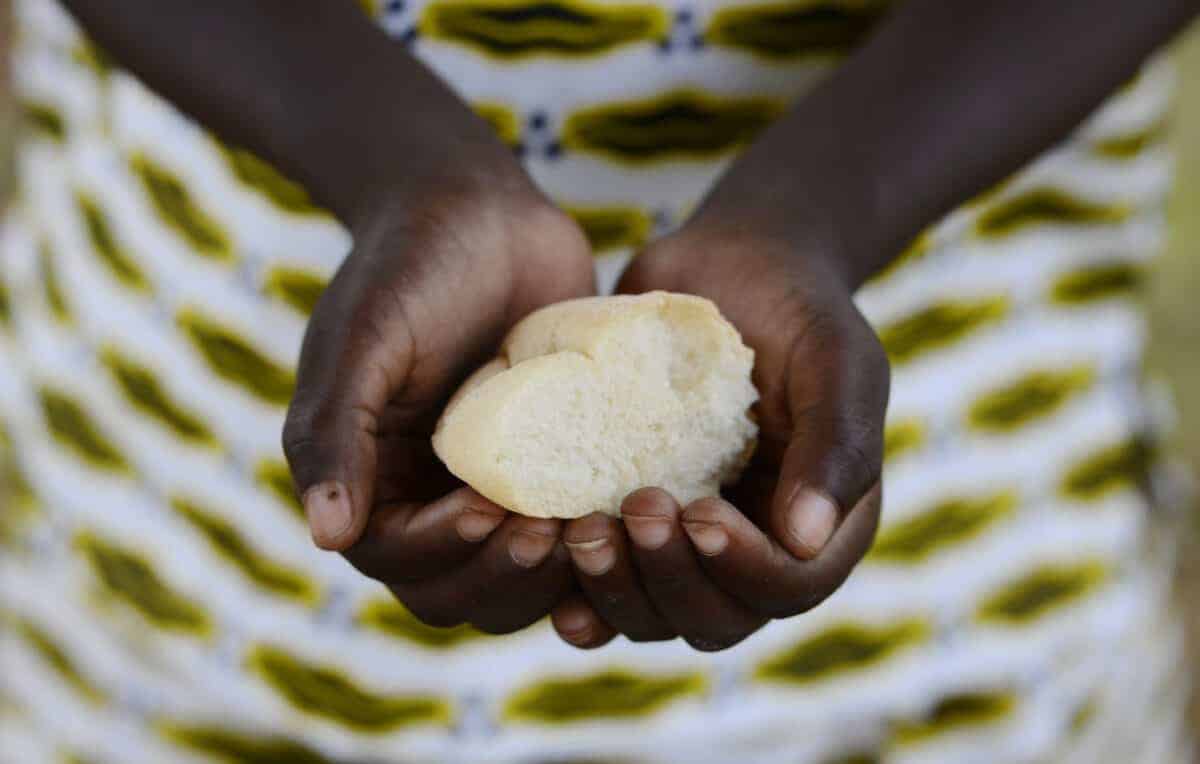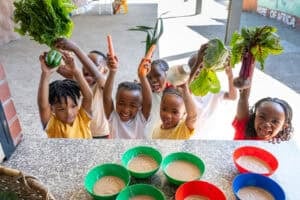In just the first four months of this year, 4 759 children were admitted to public hospitals with moderate or severe acute malnutrition.

The horrendous lived reality of South Africa’s poor and vulnerable is desperate hunger, malnourished children, helpless parents and very little systemic support to help them.
The revelation of 973 children under five years old who have died with severe acute malnutrition as an underlying cause in public health facilities the past 18 months shows just how much of a crisis hunger is in the country’s poorest households.
A crisis that Social Development Deputy Minister Ganief Hendricks continues to deny, as he did again when confronted about this falsehood at a parliamentary portfolio committee meeting on social development on 10 September.
This occurred in front of the Social Development Minister Sisisi Tolashe, who failed to correct him.
Hendricks is entitled to his opinions, but not to his own facts.
The data shows that almost two-thirds of South Africans face some form of food insecurity. Up to 23% of households experience moderate or severe hunger. 13.8 million people are living below the food poverty line.
From January to August, the average cost of a household food basket was R5 401.70, while the average minimum wage for the eight months was R4 728.32 and R4 255.49 for general workers at 10% exemption.
In the 12 months since August last year, the Pietermaritzburg Economic Justice and Dignity Group’s Household Affordability Index rose by R176.56, which might not seem like a lot to middle-income or rich families but are concrete shoes to struggling poor families.
Despite increases to the foster care grant, child support grant, old age grant and disability grant, they’re all still far below the index, with the child support grant not even being inline with the food poverty line of R796 and the average cost of a basic nutritious diet for a child was R962.92 for the time period.
The loss of the zero-rated food basket expansion, which would have meant scrapping the value-added tax for more nutritious food items often purchased by the poorest households to make them affordable, further hampers struggling households’ access to affordable nutritious foods, with dire consequences.
ALSO READ: GDE extended school nutrition programme under strain amid socio-economic pressures
Malnutrition has South Africa in a chokehold. More than 2.7 million children are in households unable to meet their nutritional needs. In 2021, researcher Prof Nic Spaull calculated that about 10.2 million South Africans experienced hunger weekly and 2.4 million were hungry almost every day.
Nearly three million children were hungry every week. The Covid pandemic exacerbated this.
The impact of food insecurity even extends beyond the hungry individual to impact the health and longevity of their descendants for generations.
Stunting is one of the most common results of malnutrition – 28.8% of children in South Africa are stunted.
The estimated number of stunted children is significantly higher than the target of 900 000, with both chronic and acute malnutrition increasing.
Malnutrition is associated with the rise of non-communicable diseases like diabetes, hypertension, heart disease, cancers and mental health disorders.
People are reportedly also struggling to maintain their antiretroviral treatments due to insufficient food and diabetics are unable to afford the regular nutritious meals meant to keep them healthy.
In just the first four months of this year, 4 759 children were admitted to public hospitals with moderate or severe acute malnutrition.
It is clear that government does not have a clear handle on the situation.
A pity as a 2019 study found that eliminating child malnutrition would have a marked improvement on SA’s gross domestic product per capita.
ALSO READ: Over 1 400 children in Gauteng suffered from severe acute malnutrition in 2024–25
But it needs a whole-of-society approach and government must address its failures in this regard.
Gauteng alone returned R332 million meant for non-profit organisations over the past two financial years and there have been significant challenges with the national school nutrition programme in KwaZulu-Natal and the Eastern Cape, which has left more than two million and 267 100 pupils respectively vulnerable to hunger.
Poor South Africans must decide between food and other necessities, including health care, education, housing, water, and transport to try and find employment.
Food shortages and malnutrition have been exacerbated by the extreme drought conditions in the Southern African Development Community region in recent years, including below-average crops, increasing already-inflated maize prices, limiting it as a regular staple.
And the outbreak of foot-and-mouth disease is causing a rise in beef prices.
Malnutrition and hunger are direct stumbling blocks to unemployed people’s desire and ability to seek work.
Further, people face termination from physically demanding jobs when their diets do not contain adequate nutrition to sustain them.
A concerted effort by all stakeholders to progress towards the sustainable development goals of “no poverty” and “zero hunger” is needed.
We neglect these goals to our own peril.
NOW READ: Poor kids pay the price of cadre looting






